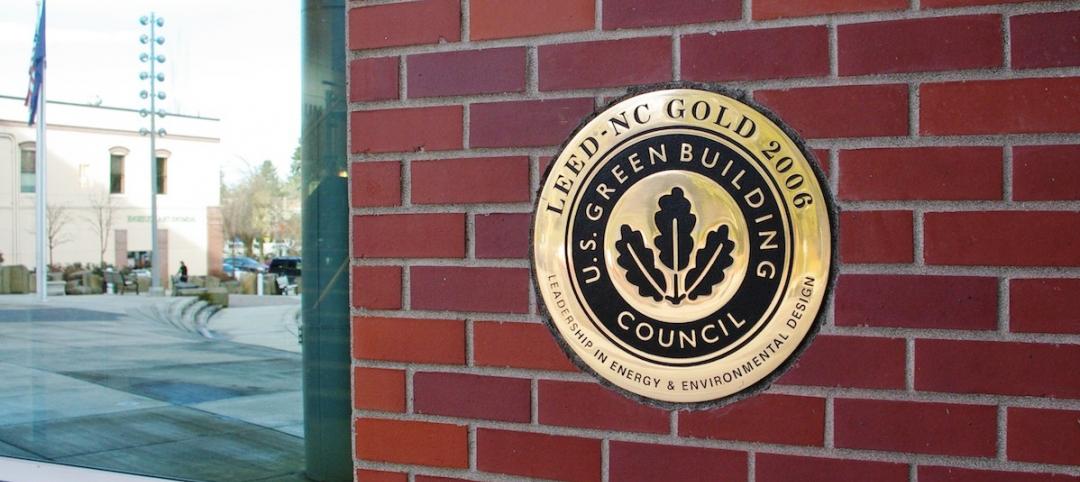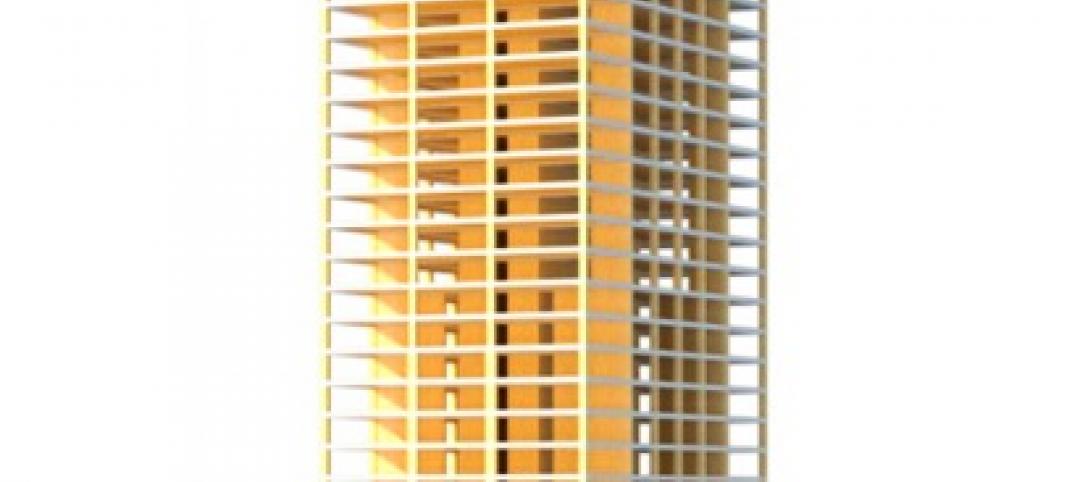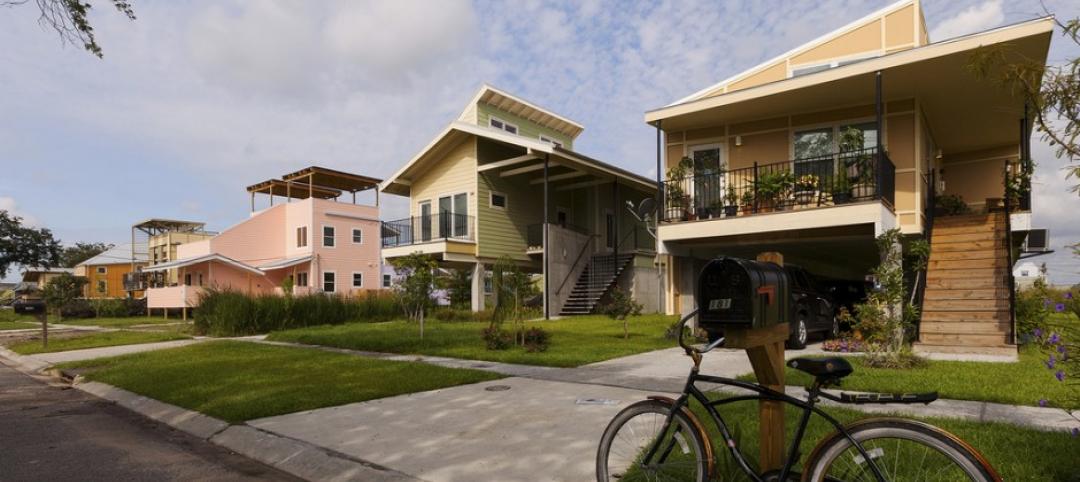The winners of the 3rd International Holcim Awards competition for sustainable construction projects and visions from North America have been announced. A total of $300,000 was presented to ten diverse and innovative projects from Canada and the U.S. at a ceremony in Washington, D.C. The winning projects show how greater levels of sustainability can be reached in building and construction through people-focused designs that include simple adaptation, innovative materials, and clever architecture.
The Swiss-based Holcim Foundation for Sustainable Construction conducts the competition in parallel in five regions across the world. More than 6,000 submissions for projects located in 146 countries entered the Holcim Awards which aims to promote sustainable responses to contemporary technological, environmental, socioeconomic and cultural issues from the building and construction industry.
Gold to an infrastructure network for Inuit communities in Canada
A socio-architectural project to create regional food-gathering nodes and a logistics network in Canada's high arctic territory won the top prize for North America of $100,000. The Arctic Food Network (AFN)secures mobility between the scattered Inuit communities, allows a better distribution of local foods, and serves as a series of bases for the reinforcement of traditional hunting. The infrastructure project by Lateral Office/InfraNet Labbased in Toronto, Ontario, and Princeton, New Jersey, also establishes new foundations for a sustainable, more independent economy.
Mohsen Mostafavi, Head of jury and Dean of the Harvard University Graduate School of Design, congratulated the project for creating a cohesive strategy that responds to the landscape, climatic and site conditions. "The project includes purposeful interventions which are integrated without any grand gestures or expensive structures - but instead bridges between the traditions of the Inuit and the expectations of the young generation. The project thereby provides an opportunity to create an improved future, in terms of both economic opportunity and a sustainable way of living," he said.
Silver Award to a zero net energy school building in Los Angeles
The Holcim Awards Silver was presented to a design for a two-level zero energy certified school building to be constructed on multiple campuses throughout Los Angeles. The project led by architects Swift Lee Office of Los Angeles uses "off-the shelf" components and modular panels to create a pre-fabricated system that features a double-layered façade for solar, acoustic, and environmental control and achieves a climate-responsive solution for each site. The project was applauded by the jury for its thoroughly developed and comprehensively presented design, which manages the integration of a coherent technical and structural concept, yet retains spatial and conceptual simplicity.
Energy and water efficient border control station in Maine wins Bronze Award
The Holcim Awards Bronze was awarded to Julie Snow Architectsof Minneapolis for a border control station on the US frontier to Canada at Van Buren, Maine. The approach meets a range of stringent regulations for safety, operation and durability and yet is a highly aesthetic structure marking the national frontier. A zero net energy goal and water saving targets, challenged by the remote location of the site and energy demand for 24-hour operation, are achieved through features such as a ground source heating and cooling, a solar wall to temper outside ventilation air, a ground-coupled heat pump, peaking bio-diesel boilers, LED lights, and lighting control systems to reduce fossil fuel consumption. The jury commended the design for successfully applying state-of-the-art features of sustainability in a government project with its regulatory implications.
Projects in Kansas, Hawaii, Illinois and Missouri receive Acknowledgements
Four projects were presented with an Acknowledgement prize. An energy-efficient university building in Lawrence, Kansas, by Dan Rockhill of Studio 804 which forms part of the University of Kansas architecture, design and planning curriculum and traces the entire process of planning and construction up to realization. An energy-neutral portable classroom designed for use in Hawaii by Anderson Anderson Architecture of San Francisco that reaches manufacturing and transport efficiency, and achieves low operating costs and ease of maintenance. An energy, water and waste efficient military installation in Fort Leonard Wood, Missouri by the US Army Corps of Engineersin Washington, DC, which adapts sustainable planning and construction to the military field. And, the Ford Calumet Environmental Center by Studio Gang Architectsof Chicago that reuses materials from the site's previous industrial function - while serving bird watchers and creating a dialog about the region's environmental past, present, and future.
"Next Generation" prizes for post-graduate student visions
The Holcim Awards competition recognizes the importance of engaging tomorrow's professionals on the theme of sustainable construction through the "Next Generation" category which shares the visions and ideas of postgraduate university students. First prize was awarded to Keith Van de Riet, Rensselaer Polytechnic Institute (RPI) in Troy, NY for a strategy to strengthen mangrove forests along coastlines to reinforce the natural protection of the coastal communities against the threat of tsunamis. Second prize was awarded to a team of students led by David Getty, Rhode Island School of Design (RISD)of Providence, RI for the unique use of secondary building materials in a temporary festival structure. Przemyslaw Latoszek of the University of Toronto received the third prize for a materials science project that studies the building properties of foam concrete and the potential for wider use of the material in architecture and construction.
Independent jury of international experts in architecture and sustainability
Holcim Awards submissions for projects in North America were evaluated by an independent jury hosted by the Massachusetts Institute of Technology (MIT): Mohsen Mostafavi (Head, USA), Ray Cole (Canada), Keller Easterling (USA), Harry Gugger (Switzerland), Sheila Kennedy (USA), Hans-Rudolf Schalcher (Switzerland), Nader Tehrani (USA), Bernard Terver (USA) and Mark West (Canada) used the five "target issues" for sustainable construction developed by the Holcim Foundation to evaluate submissions. The "target issues" address the triple bottom line of economic, environmental, and social factors together with architectural quality and the potential to apply the innovation in other locations.
Ceremony in Washington, DC as part of a series of Holcim Awards presentations for 2011
The Holcim Awards ceremony for North America in Washington, DC follows the presentation of winners in Milan, Casablanca and Buenos Aires. In November, the series of events will conclude in Singapore. The projects that receive Holcim Awards Gold, Silver and Bronze in each region automatically qualify for the Global Holcim Awards next year. In addition, all prize-winning projects at the regional level - including the Acknowledgement and "Next Generation" winners - will automatically compete for Global Holcim Innovation prizes which are being introduced in 2012, coinciding with the centennial anniversary of the Holcim Group. Winners of the Global Holcim Awards will be announced in April 2012.
The Holcim Awards is an international competition of the Holcim Foundation which seeks innovative, future-oriented and tangible sustainable construction projects and offers prize money of USD 2 million per three-year competition cycle. The competition is run in cooperation with renowned partner universities: Swiss Federal Institute of Technology (ETH Zurich), Switzerland; Massachusetts Institute of Technology (MIT) in Cambridge, MA, USA; Universidad Iberoamericana (UIA) in Mexico City, Mexico; Ecole Supérieure d'Architecture de Casablanca (EAC), Morocco; Indian Institute of Technology (IIT Bombay) in Mumbai, India; Tongji University (TJU) in Shanghai, China; Universidade de São Paulo (USP), Brazil; and the University of the Witwatersrand (Wits) in Johannesburg, South Africa.
The Holcim Foundation is supported by Holcim Ltd and its Group companies in more than 70 countries and is independent of its commercial interests. Holcim is one of the world's leading suppliers of cement and aggregates (crushed stone, gravel and sand) as well as further activities such as ready-mix concrete and asphalt including services.
Holcim is represented in North America by Aggregate Industries US, Holcim Canada, and Holcim (US). BD+C
Related Stories
| Jun 7, 2013
First look: Austin breaks ground on 'light-filled' Central Library
The design scheme by Lake|Flato and Shepley Bulfinch incorporates reading "porches" and a light-filled, six-story atrium.
| Jun 5, 2013
Survey of AE firms shows profits, hiring on the rise
A recent survey of more than 40 Boston-area architecture and engineering companies by consulting firm DiCicco, Gulman & Company confirms continued growth in business volume.
| Jun 5, 2013
USGBC: Free LEED certification for projects in new markets
In an effort to accelerate sustainable development around the world, the U.S. Green Building Council is offering free LEED certification to the first projects to certify in the 112 countries where LEED has yet to take root.
| Jun 4, 2013
SOM research project examines viability of timber-framed skyscraper
In a report released today, Skidmore, Owings & Merrill discussed the results of the Timber Tower Research Project: an examination of whether a viable 400-ft, 42-story building could be created with timber framing. The structural type could reduce the carbon footprint of tall buildings by up to 75%.
| Jun 4, 2013
Notification reinvented: SimplexGrinnell introduces revolutionary family of intelligent notification appliances
Simplex TrueAlert ES uses addressable technology to improve protection, simplify installation and reduce operating costs.
| Jun 3, 2013
6 residential projects named 'best in housing design' by AIA
The Via Verde mixed-use development in Bronx, N.Y., and a student housing complex in Seattle are among the winners of AIA's 2013 Housing Awards.
| Jun 3, 2013
Trifecta of awards recognize Vision/Rubenstein campus, Bayer Healthcare HQ
When Vision Equities, LLC and Rubenstein Partners purchased the 200-acre former Alcatel-Lucent campus in Whippany a little more than two years ago, the partnership recognized the property’s potential to serve as a benchmark infill revitalization for the State of New Jersey.
| May 31, 2013
Nation's first retrofitted zero-energy building opens in California
The new training facility for IBEW/NECA is the first commercial building retrofit designed to meet the U.S. Department of Energy’s requirements for a net-zero energy building.
| May 30, 2013
The Make It Right squabble: ‘How many trees did you plant today?’
A debate has been raging in the blogosphere over the last few months about an article in The New Republic, “If You Build It, They Might Not Come,” in which staff writer Lydia DePillis took Brad Pitt’s Make It Right Foundation to task for botching its effort to revitalize the Lower Ninth Ward of New Orleans.
| May 30, 2013
5 tips for running a successful BIM coordination meeting
BIM modeling tools are great, but if you can't run efficient, productive coordination meetings, the Building Team will never realize the benefits of true BIM coordination. Here are some helpful tips for making the most of coordination meetings.

















